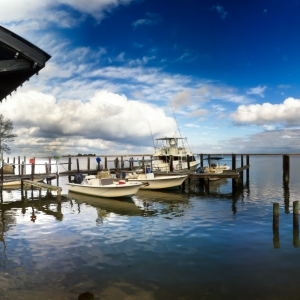Federal Water Tap, March 1: House Approves $500M More for Water Bill Assistance
The Rundown
The House passes a pandemic relief package that includes $500 million for household water bill assistance. The EPA decides to regulate two PFAS chemicals in drinking water and proposes to monitor drinking water for 29 more. A House Democrat says he wants to increase authorized spending for two main federal water infrastructure loan programs. Bills to establish a water infrastructure trust fund were introduced in Congress. The DOJ files a lawsuit to close a Puerto Rico landfill that is polluting groundwater. The EPA inspector general will review the agency’s response to recommendations on how to avoid another Flint water crisis. And lastly, the White House updates the social cost of greenhouse gases, which is used in regulatory analyses.
“We cannot afford not to make these investments, and we can’t put all of the burden on the cities and counties and the individual ratepayers to do this. We need to spread that a little more widely.” — Rep. Peter DeFazio (D-OR) speaking about a House Transportation and Infrastructure Committee hearing on the country’s wastewater infrastructure. DeFazio suggested a tax on stock trades as a potential way of funding infrastructure. Democrats are preparing to release legislation that would increase authorized spending for the state revolving funds for water and sewer systems. “I’m going to push for a very ambitious number and then we’re going to find ways to pay for it,” DeFazio added.
By the Numbers
$500 million: Additional assistance for low-income households to pay their water bills. The aid was included in the $1.9 trillion pandemic relief package that the House approved early Saturday morning. Congress approved an initial round of funding ($638 million) in December, but the Department of Health and Human Services is still figuring out the allocations for states and tribes.
In context: Congress on Track to Provide Millions More in Federal Funding for Water Debt Relief
5 percent: Water available, as a share of their full allocation, to irrigators in California’s Central Valley who receive water from the federal Central Valley Project. The 5-percent allocation applies to contractors both north and south of the Sacramento-San Joaquin Delta. Municipal and industrial contractors have a 55-percent allocation. The initial allocations, which can be adjusted in the coming months depending on water supply forecasts, are an indication of the low snowpack in the Sierra Nevada and low reservoir storage, according to the Bureau of Reclamation.
News Briefs
PFAS Regulation and Monitoring
The U.S. Environmental Protection Agency made a final determination to set national drinking water standards for the forever chemicals PFOA and PFOS. By statute, the agency has 24 months to propose a draft standard, then 18 months to publish a final standard.
The EPA also proposed changes to drinking water testing that the agency uses to gather information about the frequency and concentration of unregulated contaminants.
The EPA wants utilities to test for 29 PFAS chemicals plus lithium in the next round of testing, which will run from 2023 to 2025. The agency expects to finalize the list in December 2021.
Water Bills in Congress
- The WATER Act was reintroduced in the House and Senate. The bill would establish a federal trust fund that could provide as much as $35 billion annually for water infrastructure.
- The Western Tribal Water Infrastructure Act would increase authorized spending on tribal drinking water systems to $50 million annually (up from $20 million) and expand the program to include 10 projects in the Columbia River basin and adjacent coastal basins. The federal government would fund 100 percent of the costs. Though an authorized program, Congress has not yet appropriated any funds for it. The expanded program was proposed by Oregon senators, who noticed chronic drinking water problems on the Warm Springs Indian Reservation.
Studies and Reports
Social Cost of Greenhouse Gas Emissions
The White House threw out the calculations that were used by the previous administration to estimate the benefit of reducing greenhouse gas emissions. The figures for the social cost of these planet-warming gases will revert to a 2016 formula, adjusted for inflation.
These figures, which are used in regulatory analyses, were generated for carbon dioxide, methane, and nitrous oxide.
Instead of a single number, the working group produced four figures, based on different assumptions about the discount rate, which takes into account the future value of present actions. With a high discount rate, meaning less value placed on the future, the figure for carbon dioxide is $14 per metric ton. With a lower discount rate, meaning the future is given more weight, the social cost of carbon ranges as high as $152 per ton. The choice of discount rate depends on whether a rule has “important intergenerational benefits or costs.”
The Biden administration plans a more comprehensive update to the figures in January 2022.
On the Radar
Flint Water Crisis Review
The EPA Office of the Inspector General plans to review the agency’s response to its 2018 report, which criticized the agency’s lax oversight leading up to the Flint water crisis.
The inspector general’s audit will see whether the agency has implemented recommendations, which included: establish incentives for managers to address critical health problems, put in place a risk monitoring system that calls out anomalous test results, track citizen complaints, and conduct regular trainings so that employees know the regulatory tools they have.
In context: In Flint Water Crisis, EPA’s Friendly Relationship with State Regulators Delayed Use of Legal Authority
Landfill Lawsuit
The Department of Justice filed a lawsuit to force the closure of a landfill in Puerto Rico that is polluting groundwater and surface water.
Not only is the Toa Alta an environmental and health hazard. The complaint also alleges that the trash mound is unstable and may collapse.
Federal Water Tap is a weekly digest spotting trends in U.S. government water policy. To get more water news, follow Circle of Blue on Twitter and sign up for our newsletter.
Brett writes about agriculture, energy, infrastructure, and the politics and economics of water in the United States. He also writes the Federal Water Tap, Circle of Blue’s weekly digest of U.S. government water news. He is the winner of two Society of Environmental Journalists reporting awards, one of the top honors in American environmental journalism: first place for explanatory reporting for a series on septic system pollution in the United States(2016) and third place for beat reporting in a small market (2014). He received the Sierra Club’s Distinguished Service Award in 2018. Brett lives in Seattle, where he hikes the mountains and bakes pies. Contact Brett Walton






Leave a Reply
Want to join the discussion?Feel free to contribute!